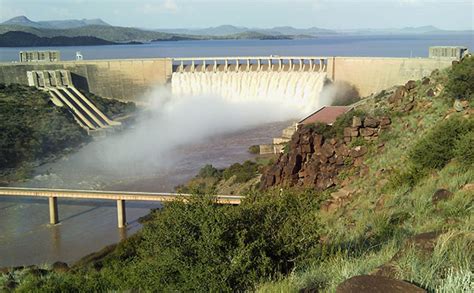In the heart of Southern Africa, a remarkable phenomenon is unfolding as water levels in dams across South Africa surge significantly. This surge comes as a boon amidst concerns over dwindling water resources and the looming threat of drought.
Amidst this environmental blessing, government officials are closely monitoring the situation, particularly focusing on the Vaal Dam, located in the northern parts of the country. The Department of Water and Sanitation (DWS) has been providing real-time updates on the escalating water levels, painting a picture of hope and resilience in the face of adversity.
Government’s Vigilance
According to Wisane Mavasa, spokesperson for the Department of Water and Sanitation, “The recent surge in water levels is a welcome change from months of decline. We have been closely watching the Vaal Dam and are pleased to see it rise from its worrying lows.”
The unforeseen increase in water levels can be attributed to heavy rainfall that has graced various provinces including Gauteng, North West, Free State, Limpopo, Mpumalanga, and KwaZulu-Natal. This deluge has not only replenished dam reserves but also boosted water supply systems vital for sustaining communities and industries across these regions.
Averting Crisis
With fears abated about dropping below critical operating levels, Mavasa reassures that proactive measures such as releasing water from other sources into the Vaal Dam will no longer be necessary. The current level surpassing 50% signifies a turning point in securing stable water resources for immediate future needs.
The Integrated Vaal River System (IVRS), responsible for supplying Gauteng and key industries with water resources, has experienced a significant uptick reaching 79.4%. This upsurge underscores the interconnectedness of various dams and systems working harmoniously to meet escalating demands.
Nationwide Impact
Beyond just one region benefiting from this natural bounty, provinces like Mpumalanga and KwaZulu-Natal have witnessed substantial increases in their dam levels by double digits within a short span. These developments signify not just individual success stories but a collective national effort towards conservation and sustainability.
Limpopo’s rise from 73.2% to 82.6%, North West’s leap to 72.5%, and Free State’s substantial growth highlight how this meteorological gift has transcended borders to touch lives far beyond expectations.
As rainfall continues showering parts of these provinces with unprecedented amounts exceeding 150-200mm—ushering hope for further improvements—the call for caution remains paramount amidst nature’s unpredictable course.
Urgent Cautionary Measures
“This newfound abundance should not lull us into complacency,” warns Mavasa as she urges residents to exercise vigilance during heavy rains. From avoiding swollen rivers to steering clear of flooded areas – precautions must be taken seriously given nature’s unpredictability.
In emphasizing safety first amidst such climatic shifts she says: “Let us all keep safe by staying indoors whenever possible while heeding warnings around potential hazards.”
While celebrating this newfound respite from dry spells that once plagued many regions within South Africa—notably impacting agriculture production—Mavasa stresses on continued vigilance when using precious resources wisely despite temporary windfalls.
As Peter Thompson MD at uMngeni Water Services aptly puts it: “We must cherish these moments where nature smiles upon us; however fleeting they may seem.”
This narrative not only highlights our interconnectedness with nature but also serves as a poignant reminder that conservation efforts intertwined with favorable climatic conditions can pave way for brighter tomorrows filled with abundance—a lesson worth embracing today more than ever before!

